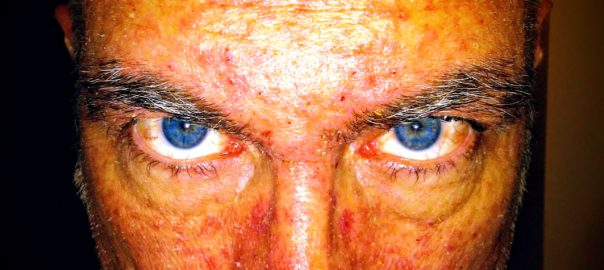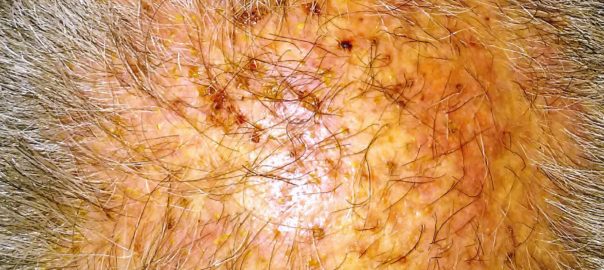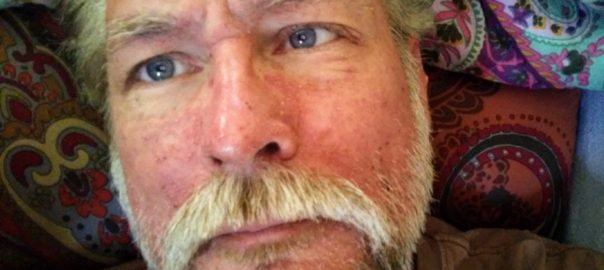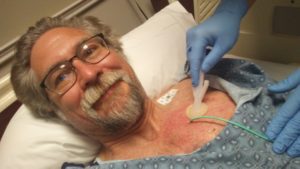I am now into the third month of my clinical trial for poziotinib. After the first two months, I had to take two weeks off for recovery from the rash it gave me. I am, however, glad to be back on the drug for the very simple reason that it was effectively killing the cancer within me. That is not a claim I make lightly, or, sadly, have had reason to make much at all over the past year.
When I was first put on chemotherapy back at the end of 2014, it was because there were no targeted therapies or immunotherapies available, either on the market or through clinical trials, that were likely to work for me. Chemo seemed to be the only option and, in some ways, it felt like a last-ditch effort. My tumor was considered inoperable, the metastasis had spread too far and wide, and radiation was not even being presented as an option.
While I was primed for a limited response and the possibility that I might only get a few months extension from the process, it turned out that chemo kind of worked for me. It worked well enough, in fact, that I would stay on it for over two and a half years — most of that time, simply keeping the cancer growth in stasis. There was talk of the possibility of being on that drug for five or more years at one point, but not long after the two-year mark I began to notice small changes in my scans. Very small, but changes, nonetheless. Continue reading Week One: The Oozing Begins →
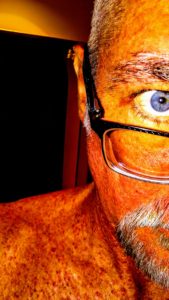 I was told twice in one day this week that I looked “bright.” I was smiling and active, keeping myself busy and directed, and I was surrounded by people who I had not seen in several months (along with a few I had never seen at all). It was the good nature of reconnecting in a friendly crowd without the threat of being lost in it, I imagine, that sparked my particularly good mood on that occasion. The description was used again on subsequent days by unrelated people, causing me to take note that, perhaps, the whites of my eyes have simply become whiter. (Insert your own Revolutionary War joke here.) Continue reading To Clear or Not to Clear
I was told twice in one day this week that I looked “bright.” I was smiling and active, keeping myself busy and directed, and I was surrounded by people who I had not seen in several months (along with a few I had never seen at all). It was the good nature of reconnecting in a friendly crowd without the threat of being lost in it, I imagine, that sparked my particularly good mood on that occasion. The description was used again on subsequent days by unrelated people, causing me to take note that, perhaps, the whites of my eyes have simply become whiter. (Insert your own Revolutionary War joke here.) Continue reading To Clear or Not to Clear
 I was told twice in one day this week that I looked “bright.” I was smiling and active, keeping myself busy and directed, and I was surrounded by people who I had not seen in several months (along with a few I had never seen at all). It was the good nature of reconnecting in a friendly crowd without the threat of being lost in it, I imagine, that sparked my particularly good mood on that occasion. The description was used again on subsequent days by unrelated people, causing me to take note that, perhaps, the whites of my eyes have simply become whiter. (Insert your own Revolutionary War joke here.) Continue reading To Clear or Not to Clear
I was told twice in one day this week that I looked “bright.” I was smiling and active, keeping myself busy and directed, and I was surrounded by people who I had not seen in several months (along with a few I had never seen at all). It was the good nature of reconnecting in a friendly crowd without the threat of being lost in it, I imagine, that sparked my particularly good mood on that occasion. The description was used again on subsequent days by unrelated people, causing me to take note that, perhaps, the whites of my eyes have simply become whiter. (Insert your own Revolutionary War joke here.) Continue reading To Clear or Not to Clear
